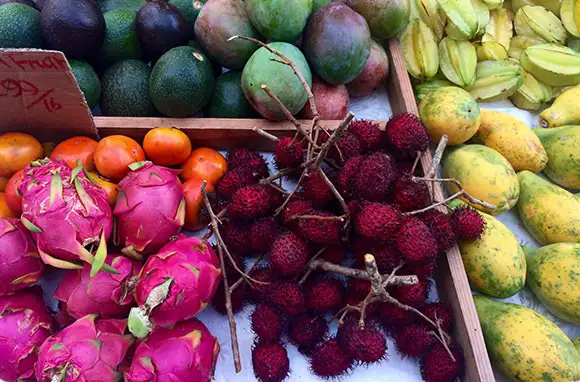
The variety of fruit sold in most supermarkets might seem impressive, but in reality it’s only a fraction of what people around the world enjoy. From horn melons and wood apples to cherimoya and durian, there are tons of wonderfully bizarre fruits that grow in many tropical regions of the world. Here are 14 you need to try.
Image Gallery
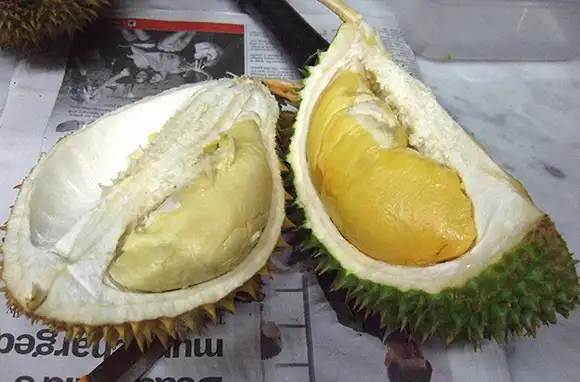
Durian
Native to Indonesia, Malaysia, and the Philippines, durian is considered the "king of fruit" in many parts of Southeast Asia, and is used in everything from popsicles and pizzas to vermicelli dishes and sushi.
Durian is distinct for its thick, dense thorns, green skin, and large size—it can weigh up to seven pounds and reach a foot long. Its pungent smell is often compared to rotting fruit, with notes of banana, caramelized onion, and aged blue cheese. And many people say it tastes like garlic, onion, caramel, and whipped cream.

Durian
Native to Indonesia, Malaysia, and the Philippines, durian is considered the "king of fruit" in many parts of Southeast Asia, and is used in everything from popsicles and pizzas to vermicelli dishes and sushi.
Durian is distinct for its thick, dense thorns, green skin, and large size—it can weigh up to seven pounds and reach a foot long. Its pungent smell is often compared to rotting fruit, with notes of banana, caramelized onion, and aged blue cheese. And many people say it tastes like garlic, onion, caramel, and whipped cream.
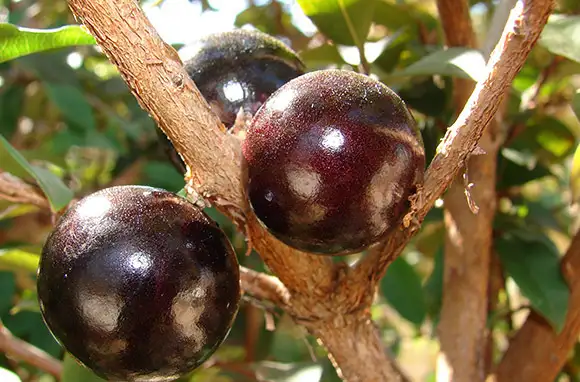
Jabuticaba
The Jabuticaba fruit is native to the Minas Gerais region of Brazil. It grows from the Jabuticaba tree—also known as the Brazilian Grape Tree—and has a thick, purple-black skin, reminiscent of a large grape. Its flavor is sweet like a grape and slightly tangy, which makes it delicious in jellies and cheesecakes.
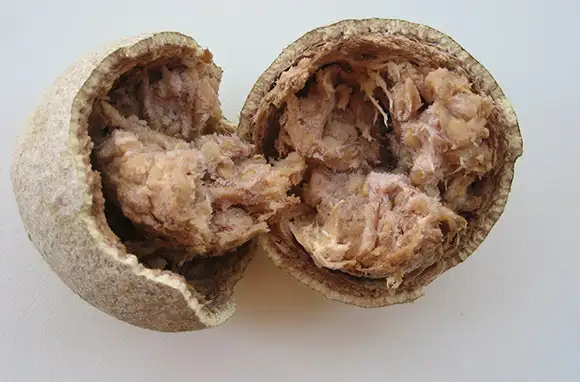
Wood Apple
Wood apple is indigenous to the dry areas of India and Sri Lanka, and is cultivated throughout Southeast Asia and Northern Malaysia.
It has a dry, coconut-like exterior and a soft brown interior. But donât be taken aback by its insides—while they might not look very appealing, Wood Apple has a pleasant creamy and slightly sour raisin taste, and it's a popular ingredient in many native jams, chutneys, and custards.
The pulp is also blended with coconut milk and palm sugar to make wood apple milk, a popular Sri Lankan beverage, which can be frozen and made into ice cream. Additionally, the fruit is known to promote healthy digestion, treat gum disease, sore throat, and even hiccups.
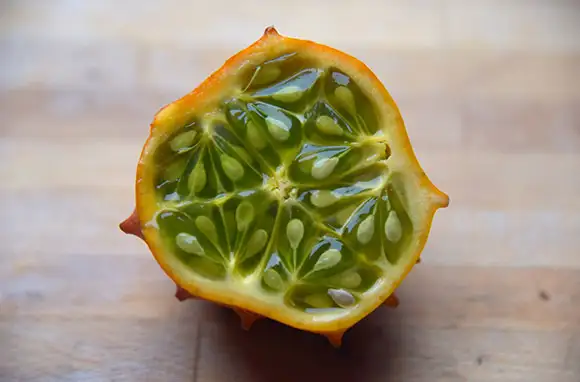
Horn Melon
Also known as the blowfish fruit, the horn melon has a vibrant yellow-orange color, spiky points, and juicy green interior.
It's sweet and tart and tastes like a combination of cucumber, banana, and lime. And, it's also a rich source of Vitamin C and dietary fiber. When seeded, horn melon can be used in smoothies, dressings, and ice cream, and the exterior of the fruit even works as a great serving dish.
The Horn Melon is the only source of water during the dry season in the Kalahari Dessert, where it originated. Today it's also grown in New Zealand, Australia, Chile, and in parts of the U.S.
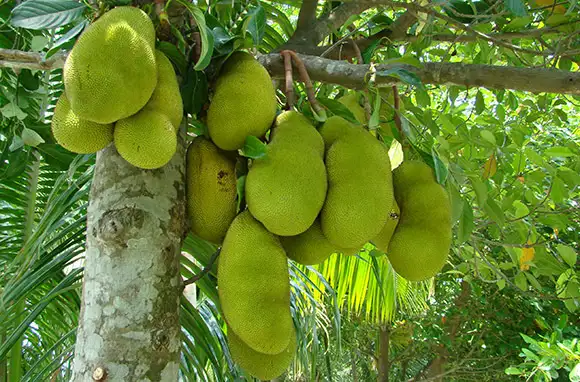
Jackfruit
Jackfruit is the largest tree fruit in the world, and can weigh up to 110 pounds. It's grown in Southeast Asia and some parts of South Florida and is the national fruit of Bangladesh.
It's full of vitamins, minerals, phytonutrients, electrolytes, fiber, fat, and protein, and is bursting with sweet flavors of melon, mango, papaya, and banana. Jackfruit is also extremely versatile and can be dried, roasted, eaten fresh, or added to everything from soups and curry dishes to juices and jams.
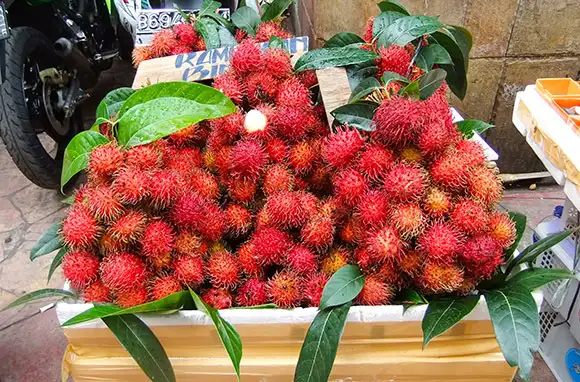
Rambutan
Rambutan gets its name from rambut—the Malaysian word for hair. It's related to the lychee fruit and is known for its crimson, hair-like exterior.
Sweet and aromatic, Rambutan is ideal for muddling into cocktails and adding to tropical fruit salads. You can also enjoy it on its own—the bristles are soft and pose no threat.
Rambutan is grown in Indonesia, Thailand, and Malaysia, and cultivated for export in Australia, Sri Lanka, Central America, and Vietnam. Today it can also be found in parts of Europe, the Middle East, and North America.
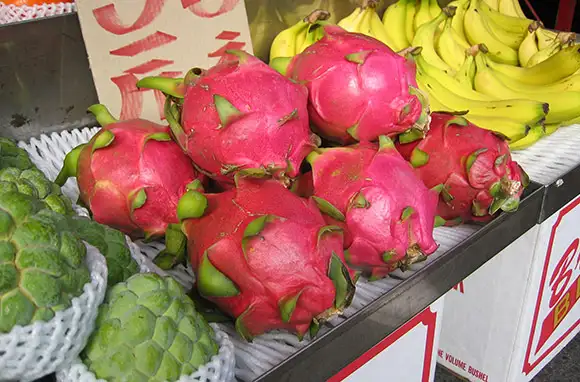
Dragon Fruit
One of the most vibrant fruits in the world, the dragon fruit—or pitaya—tastes like a combination of a kiwi and pear, and resembles a pink rosebud. It grows on a cactus plant and has a spongy red-to-white interior, which is bursting with edible black seeds.
Dragon fruit was first discovered in Central America and now can be found in California, Central and South America, and Southeast Asia. It's best when eaten chilled, and goes well in fruit salads, smoothies, and cocktails.
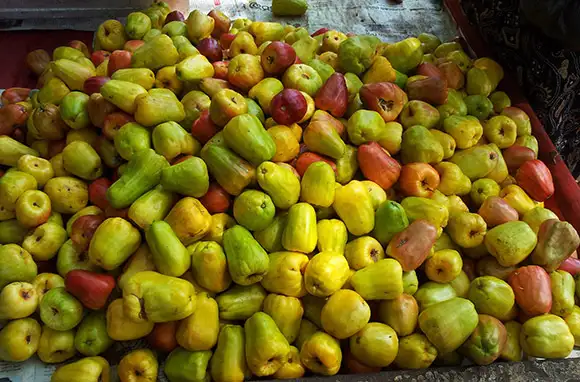
Cashew Apple
Cashew apples are native to tropical regions of Brazil, and support cashew nut production. Because of the apple's incredibly fragile skin, it is typically discarded when the nuts (seeds) are picked. But in certain parts of Brazil and India, cashew apples are used in curry dishes, juices, jams, and a liqueur called feni, which is produced exclusively in Goa, India. This sweet and juicy fruit can also be enjoyed fresh from the tree.
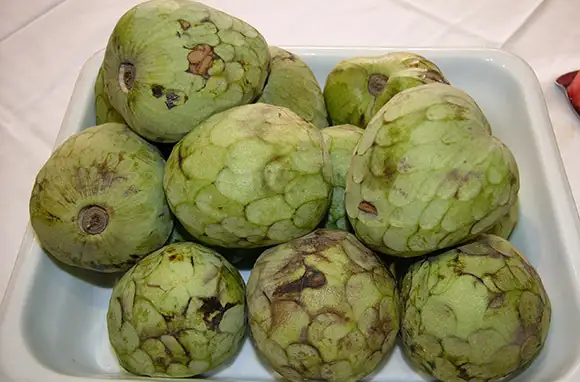
Cherimoya
Mark Twain once referred to cherimoya as "the most delicious fruit known to men."
Cherimoya is a luscious, creamy fruit with the perfect combination of sweet and tart. It tastes like a blend of mango, banana, papaya, pineapple, and coconut, and is commonly used in custards and puddings—hence its nickname, custard apple.
It originates in the mountains of Ecuador and Peru, and today it's grown in Australia, South America, Asia, Spain, Italy, Southern California, and Hawaii.
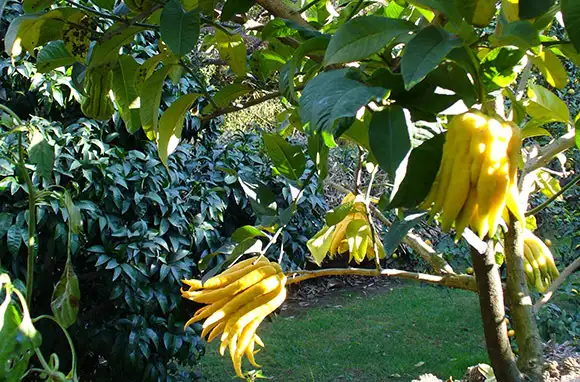
Buddha's Hand
Originating in the lower Himalayas, Buddha's Hand is one of the oldest members of the citrus family and is very important in Chinese culture. It represents Buddha's praying hands and is used to remedy many illnesses. It's also a symbol of happiness, longevity, and good fortune, and is often displayed in homes and temple altars.
Unlike most fruits, Buddha's Hand contains no juice, pulp, or seeds, but its sweet and lemony rind makes it ideal for zesting, infusing spirits, and for flavoring many desserts, dressings, and marinades. And if you think it's too pretty to eat, just use it as a centerpiece on your dining room table.
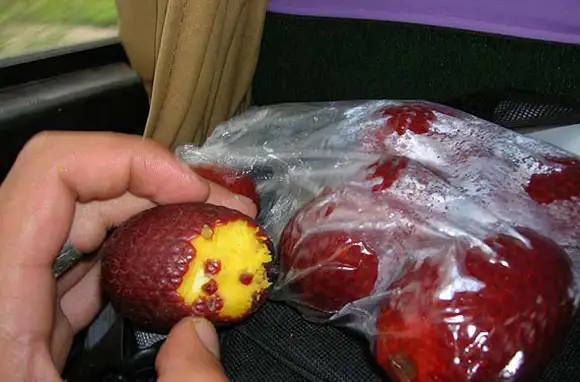
Aguaje
This grape-like Peruvian fruit originates in the Amazon Rainforest and is characterized by its scaly maroon exterior and bright yellow flesh.
Agauje fruit is known to improve complexion due to its richness in buriti oil and high source of Vitamin A and C; it's also said to help with hormone balance. Agauje is commonly eaten raw, used in desserts, juices, and jams, and is fermented into wine.
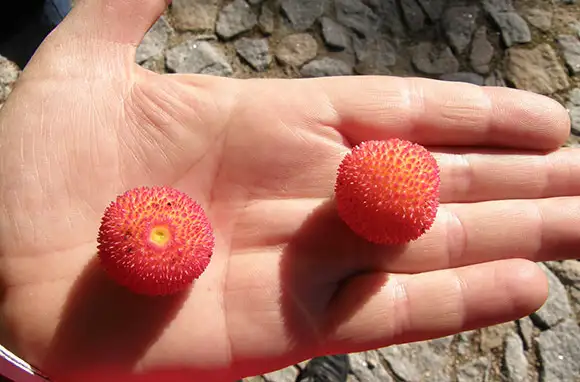
Medronho
Medronho berries are obtained from the fruit of the Medronho tree, Arbutus Unedo (the "strawberry tree"), which grow wild in the inner Algarve and Alentejo regions of Portugal, and in other parts of the Mediterranean and Western Europe.
They are high in pectin, making them ideal for using in jams and preserves, and they are a staple ingredient in many Portuguese brandies and wines.
RELATED: 10 Best Regional Foods in America
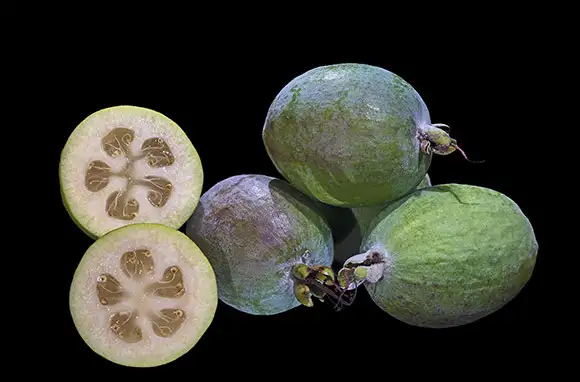
Feijoa
Feijoa is a South American-born fruit that bursts with juicy flavors of pineapple, papaya, lemon, strawberry, and guava.
The simplest (and one of the best) ways to enjoy feijoa is by cutting the fruit in half and eating the insides—seeds and all. And while you can eat the entire fruit, the skin isn't recommended due to its bitterness. Feijoa is also delicious in ice creams, sorbets, baked goods, jams, and pairs well with cheese.
New Zealand is one of the largest producers of feijoa, which started its own Feijoa Growers Association. It's also widely available across the Mediterranean, Australia, India, and Japan, and in cool coastal locations of the U.S.
Today, there are more than 20 varieties of feijoa grown around the world.
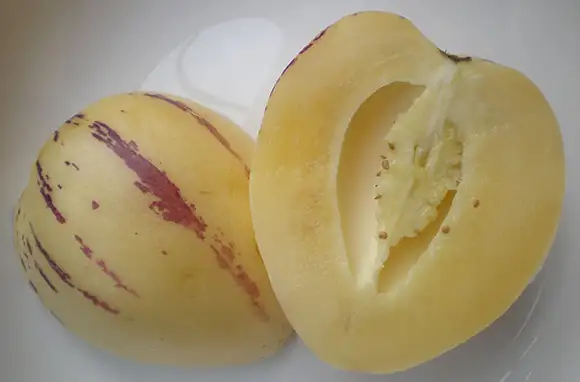
Pepino
Pepino, which is Spanish for cucumber, is native to the temperate Andean regions of Peru, and is also grown throughout Chile, Colombia, Ecuador, New Zealand, and in western parts of Australia.
This teardrop-shaped fruit is a light yellow-green color with unique purple streaks. It tastes like a mix of cantaloupe, honeydew, and cucumber, which makes it easily confused for a melon—pepino is actually related to the tomato and eggplant, and is classified as a nightshade fruit (one that grows in shaded areas or at night).
Because its skin, flesh, pulp and seeds are edible, the entire fruit can be put to many uses. It can be added to salads, salsas, and charcuterie platters, poached and served with a briny cheese, or baked and enjoyed on its own.
More from SmarterTravel:
- 9 Foreign Frozen Treats We Need in America
- 10 Healthy Snacks You Can Buy at the Airport
- 10 Food Fads Worth Traveling For
To read more by Olivia Briggs, follow her on Twitter @Olileibri.
We hand-pick everything we recommend and select items through testing and reviews. Some products are sent to us free of charge with no incentive to offer a favorable review. We offer our unbiased opinions and do not accept compensation to review products. All items are in stock and prices are accurate at the time of publication. If you buy something through our links, we may earn a commission.
Top Fares From
Today's Top Travel Deals
Brought to you by ShermansTravel
Shop and Save with Country Inns...
Patricia Magaña
 Hotel & Lodging Deals
Hotel & Lodging Deals
$229 -- Chicago: Discounted Rates and...
Francesca Miele
 Hotel & Lodging Deals
$229+
Hotel & Lodging Deals
$229+
$188 -- Honolulu: Save on Oceanview...
Abigail Lamay
 Hotel & Lodging Deals
$188+
Hotel & Lodging Deals
$188+



